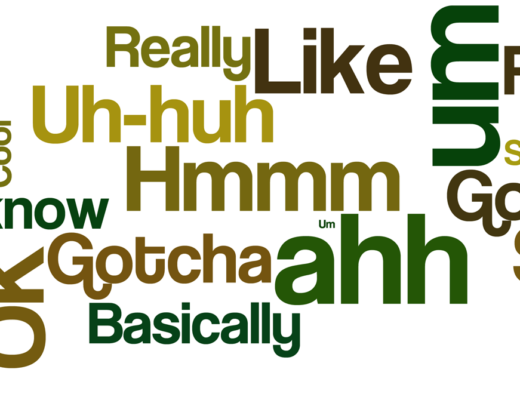What’s a sample edit, why have one, and whom does it help?
No, I’m not talking about revision for the dreaded exams we all remember swotting for at this time of year. I’m talking about revisions to your novel – self-editing if you will.
Editors receive many requests for sample edits – which they are usually happy to offer because
- Doing them helps the editor evaluate how much intervention the MS will require, how much support you, the author, will need, and thus how much to charge.
- You will see the sample edit with all the amendments tracked in Word, and will be able to decide for yourself whether what’s been suggested meets your expectations, and whether the two of you will be a good fit.
Problems that can arise during a sample edit
Sometimes it’s clear that the manuscript has come straight from the author’s virtual pen direct to the editor, without any self-editing or beta reading. A few of these manuscripts are not ready for the editing stage and the editor might reply to the author with suggestions for revision and ‘product testing’. Many editors, though, are happy to take on some raw manuscripts at this stage, because they can offer the help and guidance this author might need.
Many, or most authors approach an editor after extensive rewrites and beta reads, but the writer is aware they still need to be edited.
Whatever stage the MS is at when it reaches the editor, points of issue will likely be found – after all, this is why you, the author, have decided to have your work edited. In a short extract from a novel (most of my professional colleagues offer a 1,000-word sample) an editor can find several areas that will need to be fixed in the substantive edit. These can include:
- grammar
- punctuation
- spelling
- point of view
- telling rather than showing
- tense
- dialogue tagging
- author intrusion
- info dumping
These and other issues will be what the editor is looking for in the substantive edit, but, generally speaking, if they’re present in the sample they are likely to be found throughout the manuscript.
One editor’s approach – the mini-critique.
A colleague of mine writes a mini-critique when returning the sample edit with her quote, detailing the areas where there may be problems and indicating how they can be solved. This is helpful to the author because it gives concrete examples of the areas that will need attention. The following are some snippets from a few of those mini-critiques:
- I have made a couple of specific comments regarding telling instead of showing. It can be quite difficult to distinguish these from surrounding descriptive passages, but if the reader gets a gut feeling of something being forced, it pretty well guarantees that something is being told instead of shown.
- The chapter was a mix of present and past tense. Obviously, it needs to be one or the other, and I have plumped (on your behalf) for past. There is a trend at the moment for narratives in the present tense, but it is incredibly difficult to sustain and easy to accidentally veer away from. Some authors feel that present tense adds to a sense of immediacy, but that is not necessarily the case. Suspense can be deftly created in past tense. Additionally (and perhaps crucially), some readers actively do not like present tense narratives.
- Quite a lot of work will be needed to correct grammar and punctuation (you used a lot of semi-colons where they were unnecessary/incorrect). The layout and punctuation of dialogue is also an issue (for example, each new speaker needs a new line [indented], and punctuation goes inside the quote marks). Dialogue tags are not always necessary, and where they are used, they are best kept as simple as possible (‘said’ rather than ‘reciprocated’, for example). The temptation when trying to vary tags is to use words that do not actually refer to a human utterance. Dialogue tags are for guidance (like road signs) and shouldn’t trip the reader up.
- You will notice that I’ve made comments regarding info dumps, which were apparent in a couple of places (which indicates to me that they are likely to crop up throughout). An info dump, or author commentary (which is similar) is where the author steps into the narrative and gives the reader information she thinks they need in order to appreciate the story. In the section I’ve edited, the point of view (POV) character is Bill. The info dumps could be incorporated into her thoughts, or perhaps her feelings about something she’s read. Retaining info dumps such as these creates distance between the narrative and the reader, and is not as effective at bringing the reader right into the story as creating a closer POV.
- I have made a comment regarding point of view. The POV character’s narrative should be from his or her perspective, told from inside their head, so the reader only experiences what the POV character experiences, sees, hears etc. Telling the reader what’s happening in another character’s head in the middle of this is known as head hopping. You can have more than one POV character, but they should have their own sections separated by section breaks.
- You have indicated that you’d like to trim down the word count. One of the first things you’ll notice in my sample edit is that I have deleted a number of redundant or filler words. This alone will reduce the word count to a surprising degree if there are the same percentage in the rest of the text as in the sample. Filler words can slow down a reader’s enjoyment of the text and can interfere with pace and flow. I will also address other areas in the MS where you can tighten the narrative in the main edit.
Links are often provided to various online resources dealing with the particular area of concern. The quote given will always reflect the work the editor anticipates will be required to correct those issues.
The benefits of taking action after a sample edit … or leaving the manuscript alone
When you receive your edited sample and your quote (and possibly a mini-critique as indicated above), you’ll probably have two files. Assuming you provided a Word file, the extract will have been edited using Word’s Track Changes function. You should get one file showing all the changes made by your editor, and another with all those changes accepted so you can see what the finished result would look like. If you decide to accept that editor’s quote, you may now have a period of grace of anything from a few weeks to in excess of six months. If your editor has indicated that there’s quite a lot of tweaking to be done, perhaps in particular in one area, and you have several months before editing begins in earnest, you may want to look at your novel again in the light of the editor’s comments and amendments.
Let’s have a look at the advantages and disadvantages of self-editing between the sample stage and the substantive edit.
| Is the editor able to take on the work almost immediately? | Leave your MS as it is. The editor knows what they’re getting and is happy with it. |
| If you have a little time before you need to send the full MS to your editor, think about the following: | |
| Have you the time and confidence to make the amendments the editor has suggested? | If not, leave it alone. Your novel may have taken years to write – you may have fitted work on it between a full-time job or a family. Editing the full MS is your editor’s job and he or she will have quoted on that basis. |
| Are you a prolific writer who has moved on to your next project? | If so you’ve probably done all the self-editing you wanted to do, and your MS is ready for a fresh pair of eyes. |
| Or are you a relatively new author who is still immersed in this novel? | In this case, and assuming you have time, you may want to consider looking at the points raised by your editor in the sample and asking yourself if there’s anything you can do to streamline the job. |
| Were there a lot of spelling corrections in the MS? | Run a spell-checker – but beware of homophones! |
| Did the editor ask about your language of choice (e.g. was part of the MS is US English and part in UK English)? | Decide which editing language you prefer (think of your intended audience) and standardise the whole document. |
| Were there any comments about the tense(s) used in the novel? Did your editor notice slips between past and present, or vice versa? | Read through the MS to make sure you have the correct tense throughout. Some novels can have changes of tense. Ensure you have used the right one for the section. |
| Have technical issues such as info dumping or point of view been mentioned? | First of all, make sure you understand the terms. Your editor will probably have given you some recommended reading, but if not – ask! That’s what we’re here for. Once you are happy with the terminology, go back and see why the editor has made such comments in the sample, then move on to the whole MS. You’ll probably remember where you’ve written a chunk that sounds like a guidebook, or a conversation where you weren’t sure whose head you were in at the time. |
| And when you’ve done some self-editing … | Tell your editor. Perhaps send them a short sample showing your before and after edits so they can see how you’ve understood their earlier advice. You never know, it might make a difference to the time it takes to edit the book as a whole, and thereby to the price. |
I suppose the answer to my question in the heading is ‘It’s up to you’! It is, after all, your creation. You may feel you’d rather leave the editing to the expert, or you may want to do some tweaking yourself. Remember, everything your editor tells you is to help you with your novel – he or she wants your book to be the best it can possibly be – and with your future writing.




